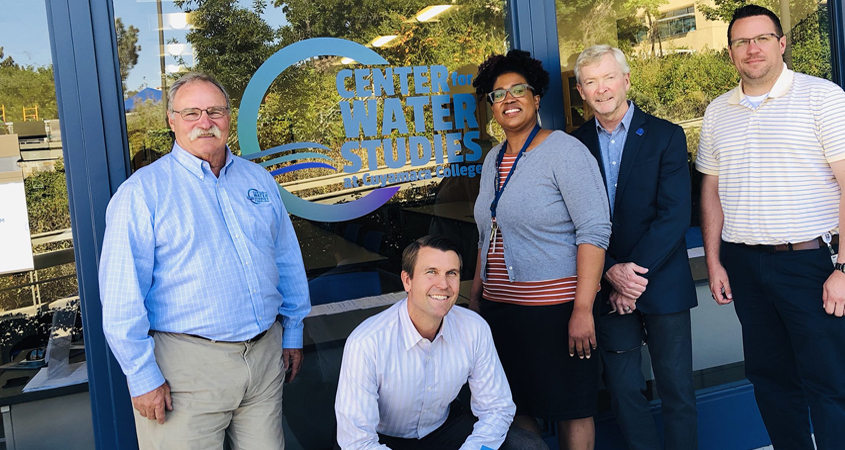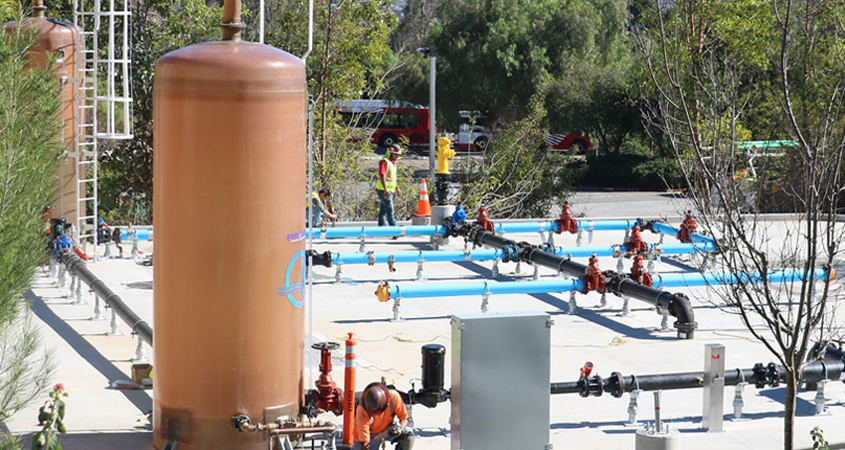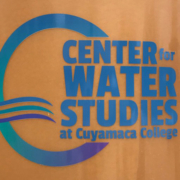Water Studies Open House Keeps Career Pipeline Flowing
In an economy altered by the coronavirus pandemic, water and wastewater industry essential employees remain in demand. To help people explore their career options, the Cuyamaca College Center for Water Studies program will hold its annual Open House and Student Orientation at distance via Zoom on Tuesday, August 11, at 6 p.m.
Vanessa Murrell, grant manager for the Center for Water Studies at Cuyamaca College, says anyone interested in exploring this career field is invited to participate and learn what makes it such an attractive choice.
“Careers in water are generally recession-proof with accessible career advancements and opportunities in addition to competitive salary and benefits,” said Murrell. “We anticipate more openings over the next few years as water remains a necessary resource for survival and sanitation.”
Murrell says the Open House offers an overview of the program, the degrees and certificates offered, the variety of courses available, details on required California state certifications, and the range of careers available in the water and wastewater industry. Participants will meet professors and current students and can ask questions.
To register for the Open House, send an email to or and you will receive a link to the Zoom site.
Career growth and meaningful jobs

Participants will meet professors and current students and get the opportunity to ask questions. Photo: Michael Barder, CVESD via Twitter
A career in the growing water industry presents an opportunity to earn money while protecting the environment and servicing the community in an essential role. The ability to provide clean, safe drinking water is a complex endeavor and is getting more complex as time goes on.
Skilled water professionals are in high demand as the current workforce ages. Water and wastewater agencies employ more than 60,000 workers statewide, including 5,000 in San Diego County, according to the federal Bureau of Labor Statistics. The Water Research Foundation anticipates one-third of the utilities workforce will retire over the next decade.
In San Diego County, wastewater treatment and system operators earn an average annual wage of more than $66,000, according to the Bureau of Labor Statistics.
Program partnerships with local water agencies

Cuyamaca College’s innovative Field Operations Skills Yard is newly updated to provide students with practical challenges they will face working with water and wastewater industry facilities. Photo: Cuyamaca College
Established in 1960, Cuyamaca College’s Water & Wastewater Technology program is the oldest and most comprehensive program of its kind in the California Community Colleges system, educating the state’s water utility workforce for more than a half a century. Its innovative Field Operations Skills Yard is newly updated, and, when students are able to return to campus, will provide students with practical challenges they will face in today’s complex water and wastewater facilities. Currently, fall courses will take place online.
The college works closely with local water agencies. Members of the Cuyamaca College Water & Wastewater Technology Program Industry Advisory Committee include the San Diego County Water Authority, City of San Diego Public Utilities Department, Helix Water District, Padre Dam Municipal Water District, the City of Escondido Utilities Department, Olivenhain Municipal Water District, and other agencies.



